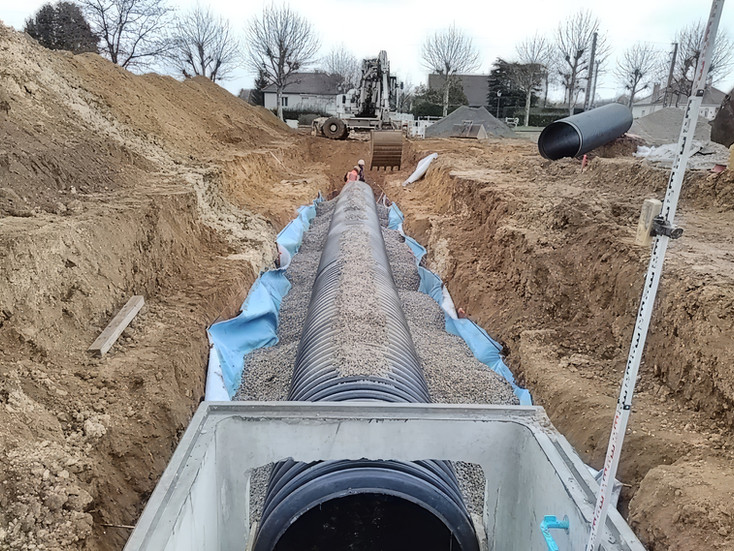Preventing polluted stormwater from entering the public sewer system
- Giovanna Winetzki
- Oct 21, 2024
- 2 min read
Updated: Nov 12, 2024
Overview
In March 2021, a project was initiated in Dordives, France, to develop an urban roadway infiltration trench as part of the creation of a Nexity housing development. The project aimed to manage runoff from roadways, parking lots, and roofs using an active OSMORIA™ Geoclean® hydrocarbon-biodegrading aquatextile. This sustainable solution focused on fixing hydrocarbons and PAHs and amplifying their natural biodegradation over the long term.
Challenge
The ALP Géomètres design office was tasked with finding solutions for infiltrating runoff water in situ, following the recommendations of the building permit, which ruled out any discharge into the public sewer. The terrain was conducive to local infiltration, with hydraulic conductivities between 10-4 and 10-5 m/s. As the common areas were to be returned to the commune of Dordives, a single structure was essential to manage the risks of diffuse or accidental pollution.
Several technical solutions were ruled out:
A gutter in the garden: The topography of the site and the location of the overflow were not suitable.
Hydrocarbon separator: The configuration required a single injection and treatment point, which was not practical for this project and did not include a shut-off and containment valve.
Solution
OSMORIA Geoclean Origin aquatextile provided a simplified, faster-to-install, and environmentally friendly solution. The infiltration trench comprised a 1000 mm (3.28 ft) diameter perforated drain set in a gravel body, creating an underground reservoir to store runoff from the entire development. An overflow was installed for exceptional rainfall.
The stored water infiltrates through the aquatextile, which wraps the outer surface of the trench, then flows into the surrounding terrain. The aquatextile's continuous blue filaments contain a natural growth activator that enables micro-organisms in the soil and water to rapidly colonize its porous structure. This ensures the degradation of fixed hydrocarbons and maintains the aquatextile's long-term retention capacity.






